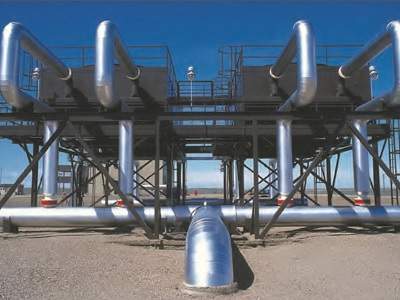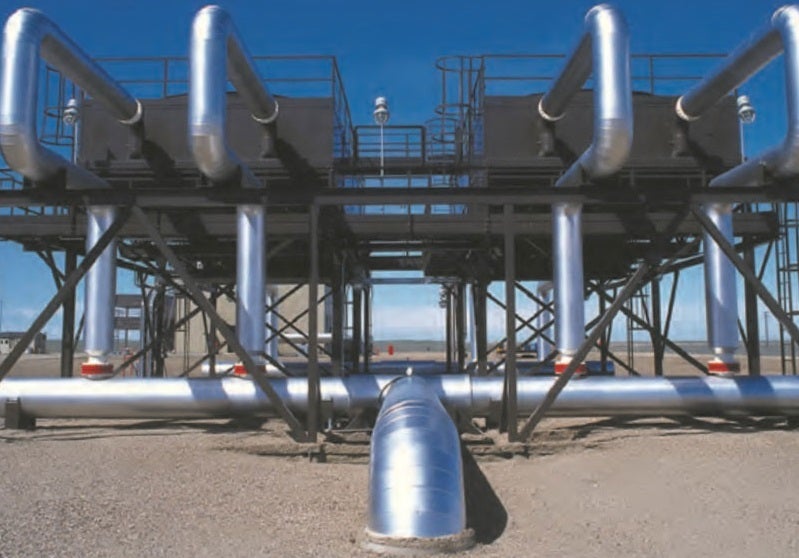

TransCanada Corporation, through wholly owned subsidiary NOVA Gas Transmission Limited (NGTL), is undertaking a $1.3bn expansion of the existing NGTL transmission system in Alberta, Canada.
The project will expand the capacity of the NGTL system by adding five pipeline sections totalling 230km in length to meet additional needs of natural gas shippers. The project was approved by the Canadian Government in October 2016.
Construction on the project is scheduled to commence in the fourth quarter of 2016, with the first facilities expected to commence operations in the second quarter of 2017. The entire project is scheduled for completion by the second quarter of 2018.
NGTL gas transmission system details
The NGTL System is one of the biggest natural gas transmission systems operated by TransCanada in Canada. Spanning the British Columbia and Alberta region, the system includes 24,500km of pipelines, 94 compressor units and associated facilities.
The transmission system gathers approximately 75% of natural gas supplies from the Western Canadian Sedimentary Basin (WCSB) for natural gas shippers to transport to the growing markets in North America.
Natural gas supplies from the WCSB are projected to rise from 14.2 billion cubic feet a day (Bcf/d) in 2014 to 19Bcf/d in 2025, especially from unconventional shale plays, requiring additional capacity in the transmission system. The expansion project will accommodate the incremental rise in natural gas supplies from British Columbia and Alberta, as well as the Deep Basin of Alberta.
NGTL system expansion project details
The expansion project will add 230km of pipeline in five separate sections including the McLeod River section of the Grande Prairie Mainline Loop No. 2, the Bear Canyon section of the Northwest Mainline Loop No. 2, the Pelican Lake section of the Liege Lateral Loop No. 2, the Christina River section of the Kettle River Lateral Loop, and the Boundary Lake section of the Northwest Mainline Loop.
The McLeod River section will be 36km-long and has a diameter of 48in (1,219mm), whereas the Bear Canyon section will be a 27km loop of the existing Northwest Mainline with a diameter of 36in (914mm).
The Pelican Lake section will be constructed as a 56km loop of the existing pipelines with a diameter of 30in (752mm). It will connect to the Thornbury Section of the Liege Lateral Loop 2 and also to the Buffalo Creek compressor station. The section will end at the Pelican Lake compressor station.
The Christina River section will be a 20km pipeline with a diameter of 24in (610mm). The Boundary Lake section will include 91km of 36in diameter (914mm) pipeline built as a loop of the Northwest Mainline.
The expansion project also includes the addition of two compressor station units at the Otter Lake and the Alces River compressor stations.
A 30MW single turbo-compressor unit will be added to the existing Otter Lake compressor station. The unit will have a maximum allowable operating pressure of 9,930kPa, similar to the existing system. A 15MW single turbo-compressor unit with a maximum operating pressure of 8,450kPa will be added to the Alces River compressor station.
Construction and infrastructure for the expansion project
The pipeline sections will include related facilities such as pipeline valve sites, launcher and receiver facilities, cathodic protection, alternating current mitigation and hydrostatic testing facilities.
The sections will share the cathodic protection system of the existing transmission system. A supervisory control and data acquisition (SCADA) system will also be added for remote monitoring.
Construction of the compressor unit additions will include foundations, instrumentation buildings, high-pressure piping, power and instrumentation, scrubbers, and risers.
Temporary infrastructure such as access roads, pipe and equipment storage sites, contractor offices and yards, as well as borrow pits and construction camps will be developed during the construction.
Most (93%) of the proposed expansion route runs parallel to existing pipeline right-of-way. Existing access roads in these areas will be used wherever possible to construct the pipeline.



